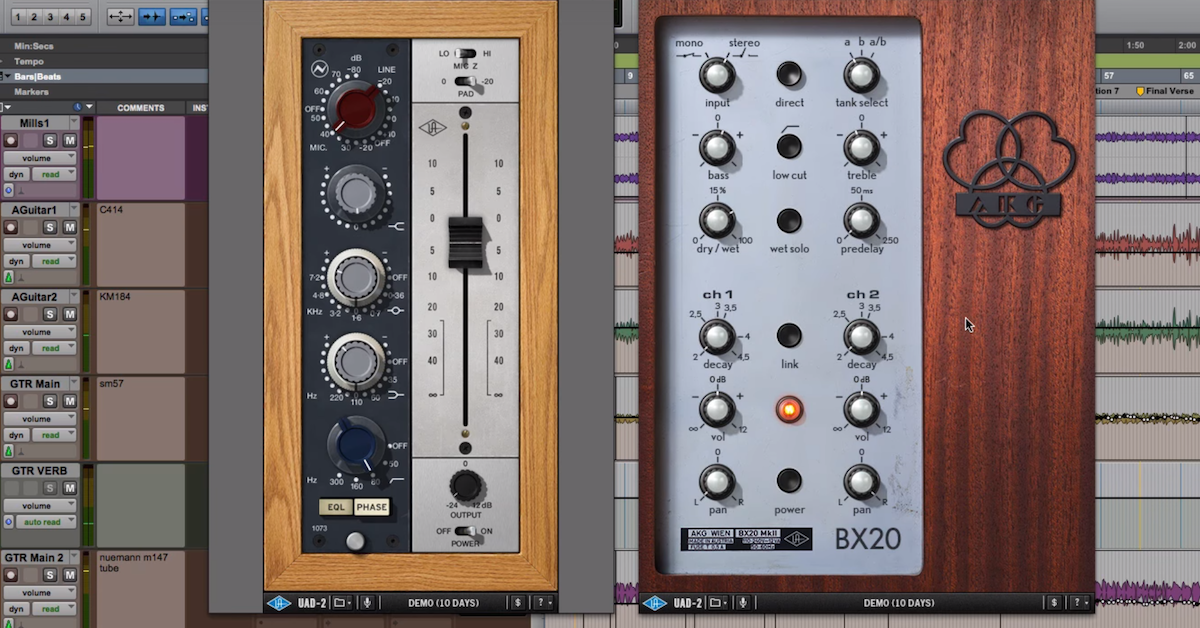
The Neutrick jacks seem solid enough as expected and should provide years of reliable use. This may not be as noticeable in a loud band situation when you’re blasting into some thick saturated Colour Box distortion or when the pedal is placed in the loop of an effects switcher, but you’ll want to be mindful of the noisy foot-switch when kicking on the pedal during a quiet song transition.

The foot-switch is of the nice hearty variety that offers a satisfying ‘click’ when activating the pedal from true bypass although its pop bleeds through quite loudly, particularly when engaging the pedal. The foot-switch is located near the edge of the pedal which allows plenty of space away from the knobs, useful for avoiding the kicking of parameter knobs when the Colour Box is used on a pedalboard. A handy flip-switch allows you to activate the Hi Pass function, activating the dedicated knob for sweeping out the lows from 60Hz to 800Hz. The 3 blue Treble, Middle, & Bass tone controls also have a center indent at noon which allows easy placement to a neutral ‘flat’ tone position. The knobs will be familiar to anyone who’s seen other JHS Pedals releases, and they’re easy enough to grip with a moderate potentiometer resistance that yields a satisfying and smooth knob feel. The Colour Box sports JHS Pedals’ characteristically minimalist appeal, packaged in a clean white enclosure (the prototypes were grey) with an attractive studio console inspired graphic on its surface. Power – 18VDC negative center power supply (included). The center frequencies are Treble 10kHz, Middle 1kHz, and Bass 12hZ, with +/- 17dB of control. EQ Controls – The tone control section is a highly modified Baxandall type that is tuned for less control interaction and more boost/cut capability.This control allows you to only let high frequencies pass. Hi Pass – The High-pass spans from 60Hz to 800Hz with a 6dB per octave slope.Step – The Step Gain (labeled “Step”) changes the gain of each preamp stage in five stages (from left to right: 1st is x 18dB, 2nd is x 23dB, 3rd is x 28dB, 4th is x 33dB, 5th is x 39dB).Pre-Vol – The Pre Volume (labeled “Pre-Vol”) can be used the same as you would a Drive knob on an overdrive pedal.Master – The Master Gain (labeled “Master”) is what would typically be considered as a Volume control.-20dB switch is a standard 20dB pad for use with the XLR input.¼” / XLR switch lets you choose between ¼” or XLR input.Separate ¼” mono output & Neutrik XLR output are independent and allow you to run parallel outputs to two destinations.Neutrik ¼” / XLR Input allows guitar, bass, vocals, acoustic guitars, keyboards, etc., to be used live or in the studio.So did it live up? Is it the ultimate tool for achieving Neve 1073 style “direct-in” saturation and dirt in a guitar effects pedal? You’ll find out in our JHS Pedals Colour Box review. The Colour Box was a concept so promising that this author even ranked it as the most impressive pedal at the Winter NAMM 2014 show, greatly adding to the initial hype surrounding this product (for better or worse).

#Neve 1073 preamp series#
What makes it so special? Well, this bold undertaking seeks to deliver a studio-grade “channel-strip-in-a-box” in the vein of the iconic Neve 1073 microphone preamp/EQ module from the Neve 80 series analog mixing consoles, something never before so thoroughly attempted in a guitar pedal. The JHS Pedals Colour Box is a landmark release for the Kansas City based effects pedal builder and an equally noteworthy pedal in the realm of guitar effects in general.


 0 kommentar(er)
0 kommentar(er)
